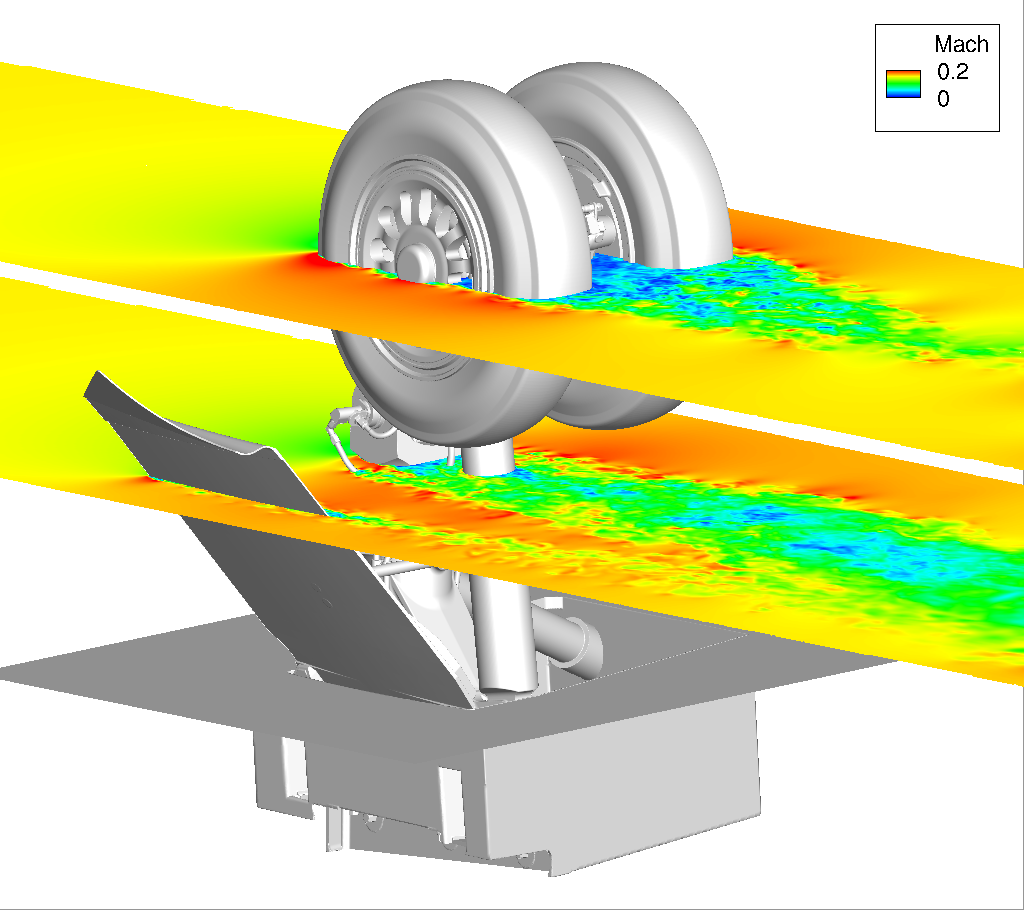Cooperative Research on High Lift Devices in the FQUROH Project
JAXA Supercomputer System Annual Report April 2018-March 2019
Report Number: R18EA2810
Subject Category: Aeronautical Technology
- Responsible Representative: Kazuomi Yamamoto, FQUROH Project Team, Aeronautical Technology Directorate
- Contact Information: Kazuomi Yamamoto(yamamoto.kazuomi@jaxa.jp)
- Members: Akio Ochi, Kazuhide Isotani, Yousuke Ueno, Hidemasa Yasuda, Yuta Tsuchimoto, Kazuomi Yamamoto, Yasushi Ito, Mitsuhiro Murayama, Ryotaro Sakai
Abstract
This collaborative research is being carried out as part of the FQUROH project aimed at raising the technical maturity level of the noise reduction technology for high-lift devices and landing gear, which draws international attention to reduce noise in areas around airports, to a level applicable to future development of aircraft and related equipment. This contributes to reduction of aircraft noise in local communities around the airport and airline operating costs by reducing landing fee.
Reference URL
Reasons for using JSS2
The JSS2 enabled low-noise devices to be designed based on Reynolds-averaged Navier-Stokes simulations and more advanced computational simulations, such as large eddy simulations, using the Kawasaki Heavy Industries (KHI)-developed unsteady computational fluid dynamics software, “Cflow.” Computational simulations using the JSS2 made it possible to design low-noise devices by understanding detailed physical phenomena, which was difficult only with wind tunnel tests.
Achievements of the Year
As a validation of the noise reduction design of the main landing gear (MLG) of JAXA’s jet research aircraft, “Hisho,” in the FQUROH project, CFD simulations of the MLG were conducted using the KHI in-house unsteady CFD software, “Cflow.” Computational results were compared with wind tunnel and flight test results, and detailed knowledge of noise generation and reduction mechanisms were obtained.

Fig.1: Unsteady CFD analysis around main landing gear of “Hisho” (instantaneous Mach number distribution)
Publications
– Non peer-reviewed papers
1) Yamamoto, K., Takaishi, T., Murayama, M., Yokokawa, Y., Ito, Y., Kohzai, M., Arizono, H., Sakai, R., Shoji, H., Ueno, Y., Tsuchimoto, Y., Isotani, K., Hayama, K., Kumada, T., and Shimada, A., “FQUROH: A Flight Demonstration Project for Airframe Noise Reduction Technology – the 2nd Flight Demonstration,” AIAA Paper 2018-4087, 2018 AIAA/CEAS Aeroacoustics Conference, Atlanta, GA, June 2018, DOI: 10.2514/6.2018-4087.
2) Murayama, M., Yokokawa, Y., Ito, Y., Takaishi, T., Sakai, R., Yamamoto, K., Ueno, Y., Isotani, K., Tsuchimoto, Y., Hayama, K., Hirai, T., and Tanaka, K., “Noise Reduction Design for Flap Side-edges toward FQUROH Second Flight Demonstration,” AIAA Paper 2018-4085, 2018 AIAA/CEAS Aeroacoustics Conference, Atlanta, GA, June 2018, DOI: 10.2514/6.2018-4085.
3) Ueno, Y., Isotani, K., Hayama, K., Takaishi, T., Ito, Y., Yokokawa, Y., Murayama, M., and Yamamoto, K., “Validation of Noise Reduction Design for Landing Gear in the FQUROH Flight Demonstration Project,” 25th AIAA/CEAS Aeroacoustics Conference, Delft, The Netherlands, May 2019, to be presented.
Usage of JSS2
Computational Information
- Process Parallelization Methods: MPI
- Thread Parallelization Methods: N/A
- Number of Processes: 2048 – 8192
- Elapsed Time per Case: 240 Hour(s)
Resources Used
Fraction of Usage in Total Resources*1(%): 0.53
Details
Please refer to System Configuration of JSS2 for the system configuration and major specifications of JSS2.
| System Name | Amount of Core Time(core x hours) | Fraction of Usage*2(%) |
|---|---|---|
| SORA-MA | 4,783,274.10 | 0.59 |
| SORA-PP | 0.00 | 0.00 |
| SORA-LM | 0.00 | 0.00 |
| SORA-TPP | 0.00 | 0.00 |
| File System Name | Storage Assigned(GiB) | Fraction of Usage*2(%) |
|---|---|---|
| /home | 79.76 | 0.08 |
| /data | 13,699.25 | 0.24 |
| /ltmp | 7,446.29 | 0.64 |
| Archiver Name | Storage Used(TiB) | Fraction of Usage*2(%) |
|---|---|---|
| J-SPACE | 112.24 | 3.93 |
*1: Fraction of Usage in Total Resources: Weighted average of three resource types (Computing, File System, and Archiver).
*2: Fraction of Usage:Percentage of usage relative to each resource used in one year.
JAXA Supercomputer System Annual Report April 2018-March 2019


